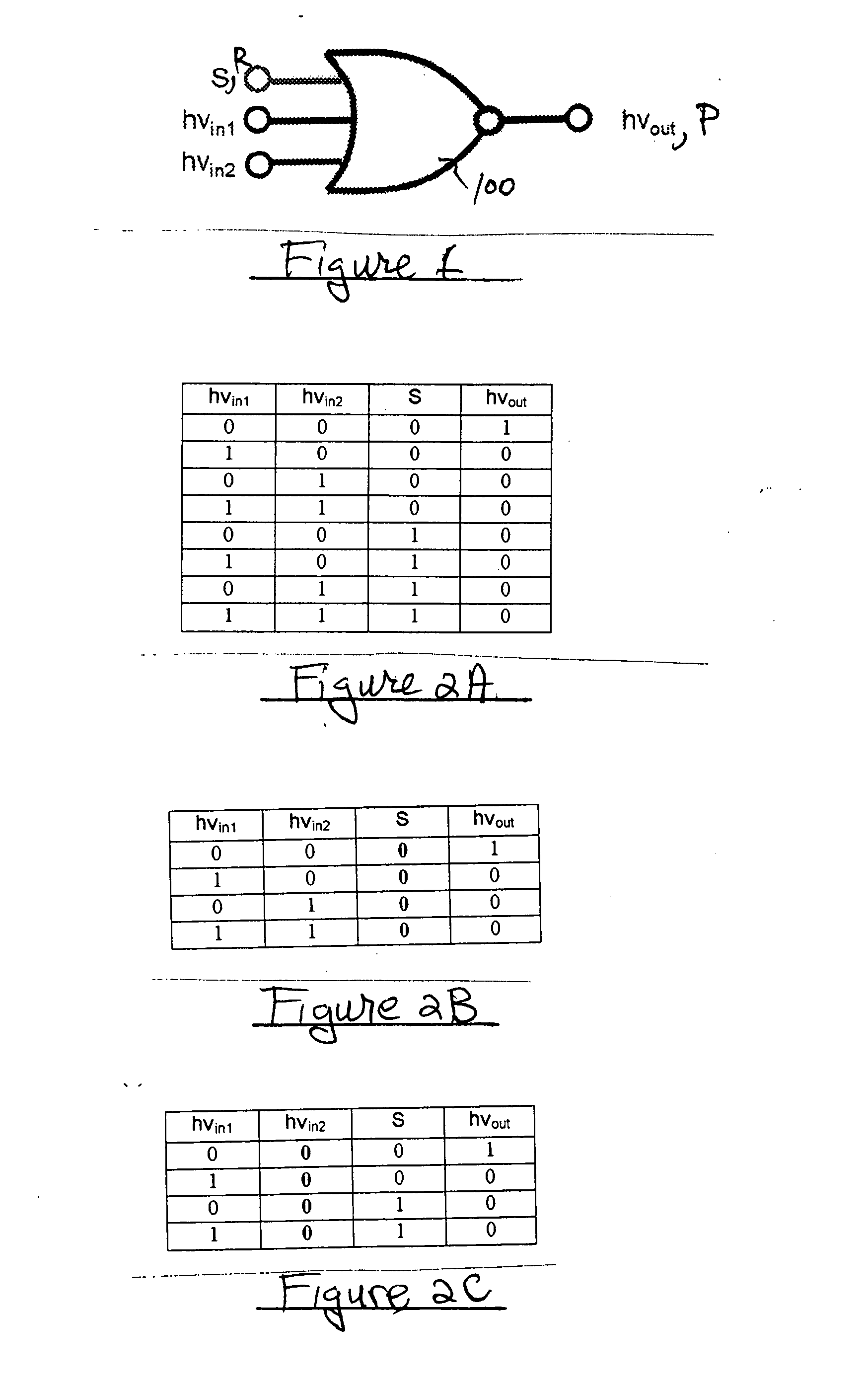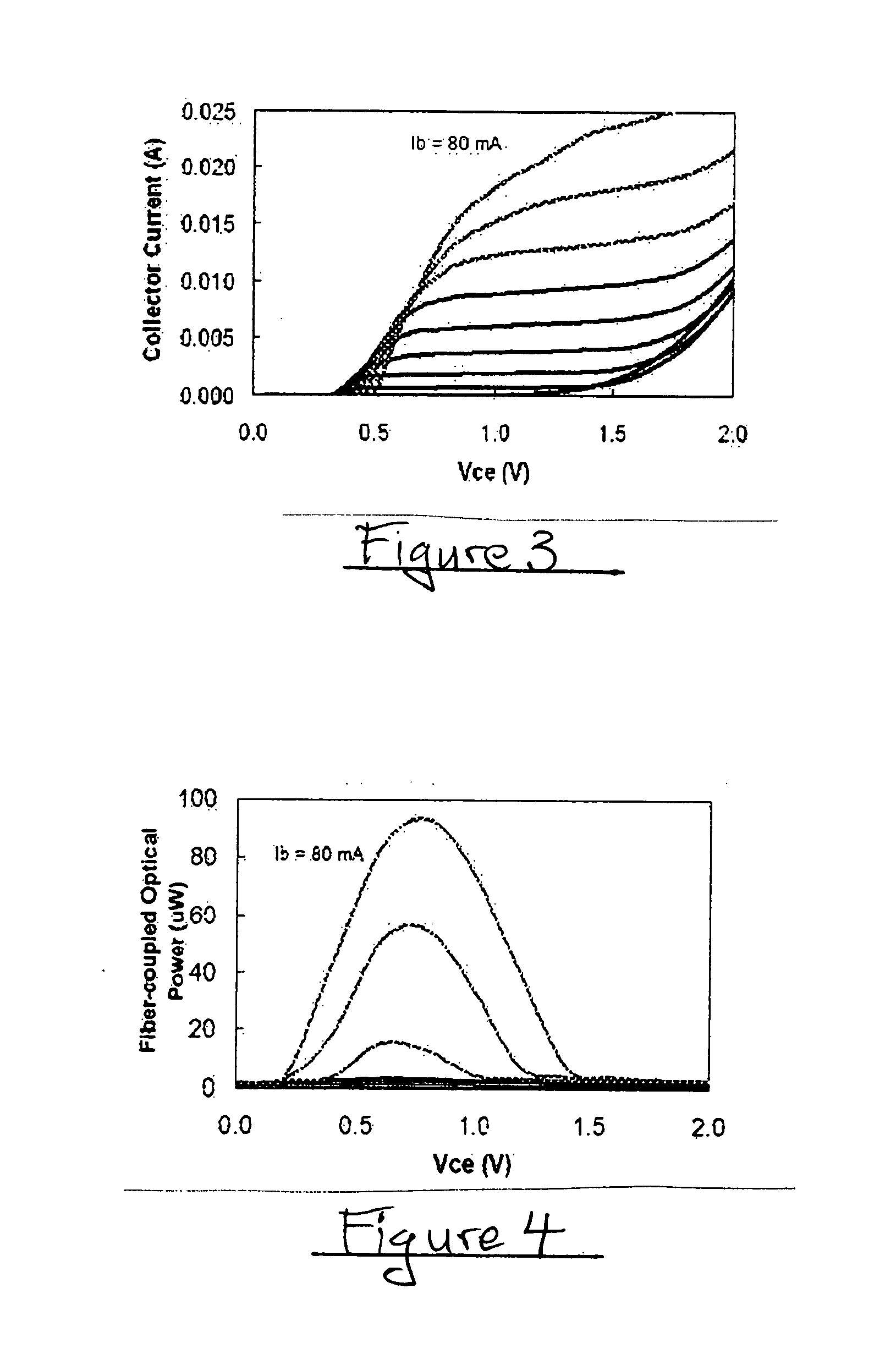Electro-optical logic techniques and circuits
a logic circuit and optical logic technology, applied in logic circuits, pulse techniques, instruments, etc., can solve problems such as the failure of previous attempts to devise optical logic, the expected stumbling block, and the complexity of copper interconnects becoming more and more complex
- Summary
- Abstract
- Description
- Claims
- Application Information
AI Technical Summary
Benefits of technology
Problems solved by technology
Method used
Image
Examples
Embodiment Construction
[0030]FIG. 1 illustrates the operation of an embodiment of a universal electro-optical NOR gate 100 which receives two or more signals as inputs. As seen in FIG. 1, the signals can be in the form of optical signals, hvin1 and hvin2, or electrical signals, S, R. It then performs a logic operation, NOR, on the input signals (see logic table of FIG. 2A), and produces its result in the form of an output signal that could be either optical, hvout or electrical, P. For example, if the NOR gate receives no input signal (i.e., all inputs “0”), it will produce an output signal (“1”). If there is a signal detected at the input (i.e., any input is a “1”), the NOR gate will turn off its output signal, hence outputting a logic “0”.
[0031]FIG. 2A shows the logic table for the case of two optical inputs, one electrical input, and an optical output. The table has eight rows representing the eight possible combinations of three binary inputs (23). FIG. 2B shows the logic table for the case of two opt...
PUM
| Property | Measurement | Unit |
|---|---|---|
| current | aaaaa | aaaaa |
| optical | aaaaa | aaaaa |
| voltage | aaaaa | aaaaa |
Abstract
Description
Claims
Application Information
 Login to View More
Login to View More - R&D
- Intellectual Property
- Life Sciences
- Materials
- Tech Scout
- Unparalleled Data Quality
- Higher Quality Content
- 60% Fewer Hallucinations
Browse by: Latest US Patents, China's latest patents, Technical Efficacy Thesaurus, Application Domain, Technology Topic, Popular Technical Reports.
© 2025 PatSnap. All rights reserved.Legal|Privacy policy|Modern Slavery Act Transparency Statement|Sitemap|About US| Contact US: help@patsnap.com



